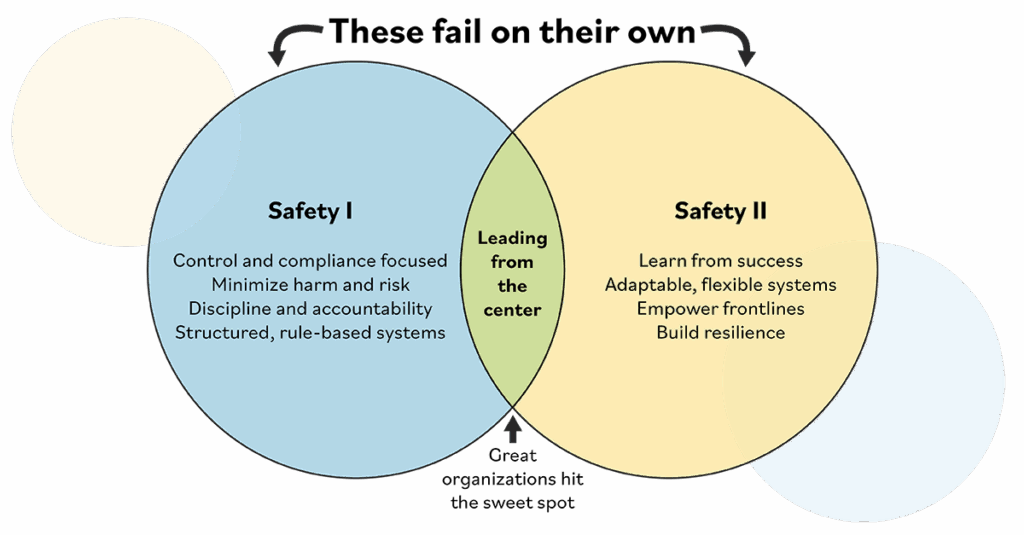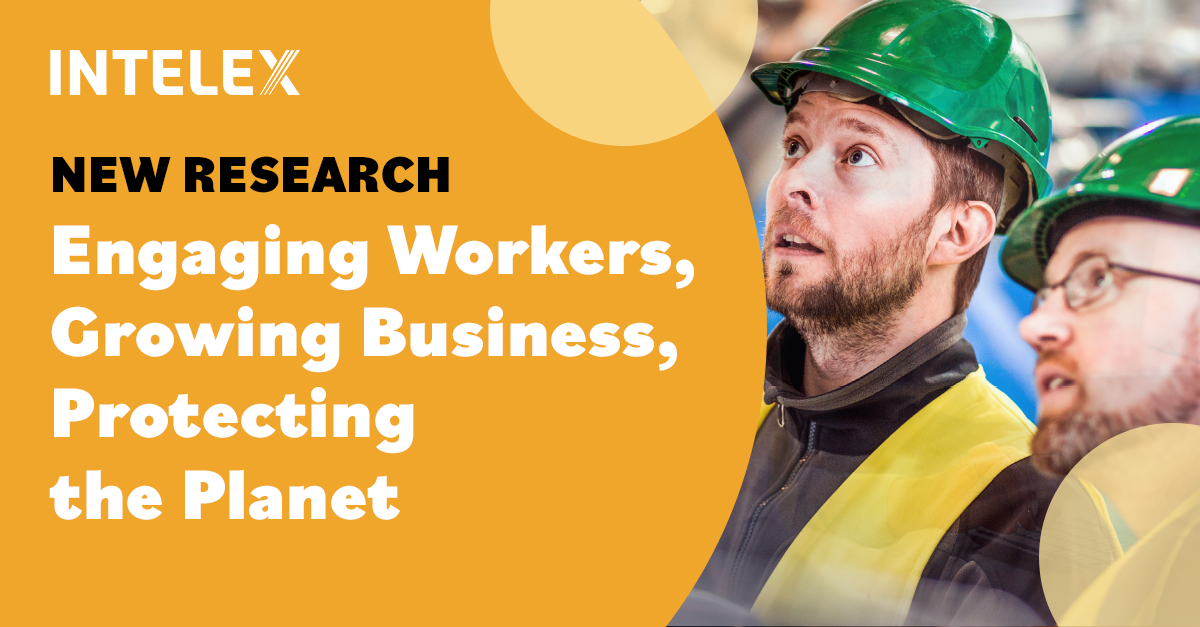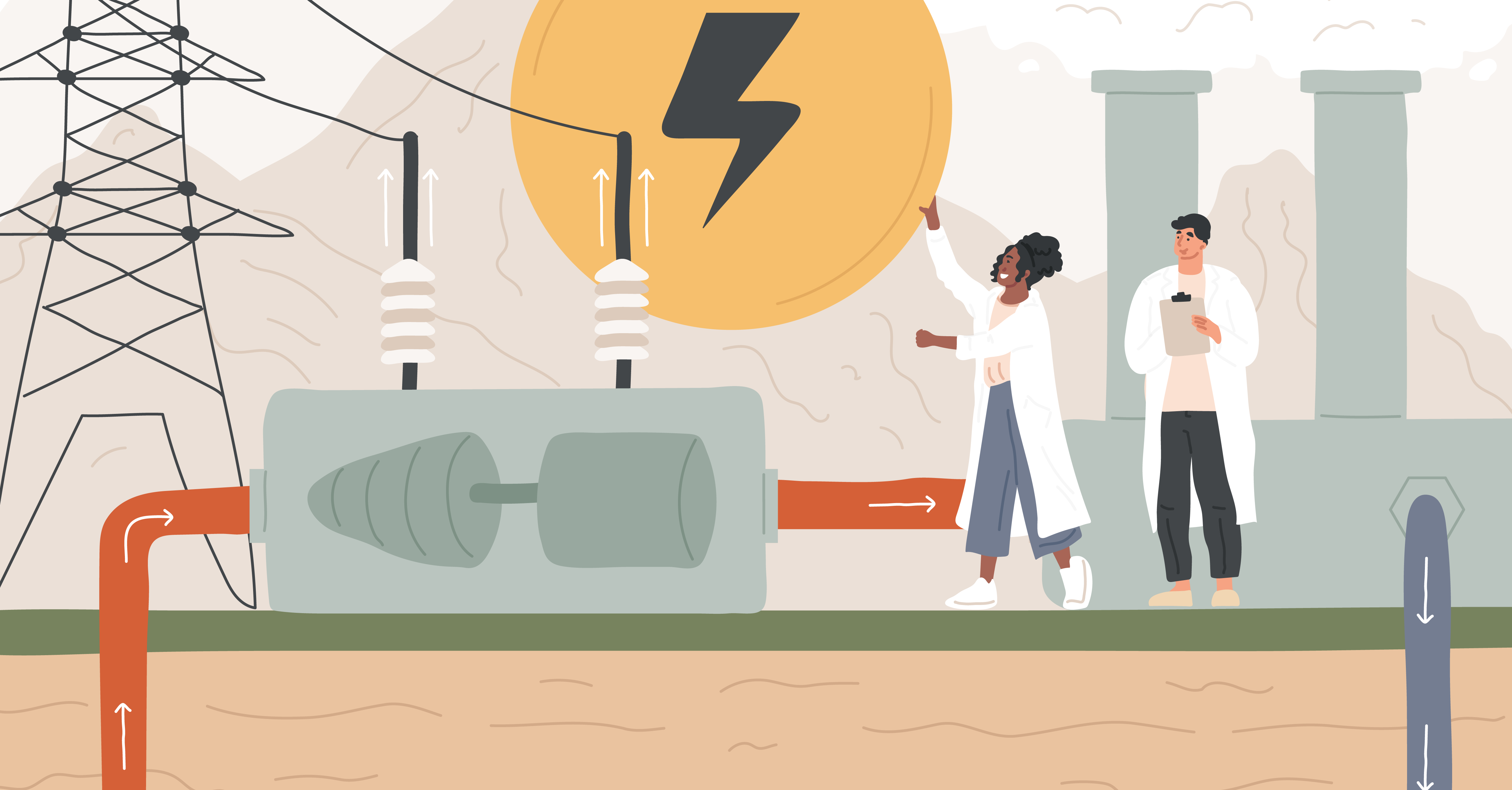Moving Past the Semantics of Safety I and Safety II
July 17, 2025
14 minute read

The safety profession is locked in a philosophical tug-of-war.
- On one side, Safety I emphasizes structure, compliance, and preventing harm through rigorous controls.
- Conversely, Safety II focuses on learning from what goes right, building resilience, and empowering workers to adapt.
As a long-time safety practitioner, I’ve watched this debate unfold at industry conferences, on platforms like LinkedIn, Reddit, and countless workplace discussions.
Too often, it becomes a clash of tribes. Safety I is dismissed as rigid and outdated, and Safety II is criticized as vague or impractical.
Both sides miss the bigger picture.
Safety I provides the accountability and discipline I learned early in my 36-year career managing occupational safety in complex industries.
Safety II brings flexibility, insight, and a human-centered approach that I’ve seen transform safety cultures.
Neither is the complete answer alone. The real opportunity lies in leading from the center, synthesizing both strengths to create safer, stronger, and more engaged workplaces.
Drawing from my book, From Participation to Partnership: A Journey and Safety at the Frontline, and Dan Petersen‘s timeless wisdom, this article offers a practical roadmap for safety leaders to bridge the divide.
It’s not about choosing sides but blending the best of both models to protect people, enhance performance, and build resilience. This is a call to action for leaders who want to move beyond theoretical debates and deliver results that matter.
Understanding the models
Safety I: The foundation of control and accountability
Safety I defines safety as the absence of adverse outcomes: No incidents, injuries, or property damage.
It’s about identifying failures and fixing them through structured tools:
- Incident reporting and root cause analysis to pinpoint what went wrong.
- Audits, inspections, and compliance tracking to ensure adherence to standards.
- Corrective and preventive actions (CAPA) to sustainably eliminate or mitigate to an acceptable level hazards and risks.
This approach is a cornerstone in high-risk environments like manufacturing or construction, where clear rules and accountability are non-negotiable. When I started in safety, the reality was that Safety I was my playbook—its rigor helped me manage hazards in fast-paced industrial settings.
But over-reliance on Safety I can lead to unintended consequences:
- Workers may hide mistakes to avoid blame, stifling transparency.
- A focus on paperwork can overshadow real-world risks.
- Rigid systems struggle to adapt to dynamic, unpredictable work environments.
Safety II: The power of resilience and learning
Safety II, inspired mainly by Erik Hollnagel, redefines safety as the ability to succeed under varying conditions. Instead of fixating on failures, it asks: What goes right most of the time, and why? How can we make those conditions the norm?
It views workers as sources of resilience, not error, and uses practices like:
- Learning Teams to explore the gap between work-as-imagined and work-as-done.
- Resilience engineering to anticipate and adapt to risks.
- Storytelling and positive deviance to share success stories.
Safety II builds proactive cultures by:
- Identifying system strengths and latent opportunities.
- Engaging workers in collaborative problem-solving.
- Cultivating psychological safety so people feel safe to speak up.
Early in my career, I saw Safety II’s principles at work when a team of operators devised a safer way to handle a repetitive task under time pressure. Their ingenuity wasn’t in the rulebook, it came from their deep understanding of the job. Safety II gave me the lens to recognize and amplify that kind of innovation.
Let’s look at an example
Imagine a warehouse worker bypassing a safety guard on a conveyor to clear a jam quickly and meet a shipping deadline.
- A safety I approach would trigger an investigation, cite the violation, and mandate retraining or discipline.
- A safety II approach would ask: Why did they bypass the guard? What pressures drove that decision? What usually keeps this task safe, and what changed today?
A balanced leader combines both — addressing the immediate non-compliance while exploring systemic pressures, like understaffing or tight schedules, to prevent future risks.
This dual approach doesn’t just fix problems. It builds a culture where workers are partners in safety, not just rule-followers.
Read our post The 5 Basic Principles of Human and Organizational Performance (HOP) for more.
Dan Petersen’s legacy: The blueprint for balance
Long before Safety I and Safety II were coined, Dan Petersen laid the intellectual foundation for both in works like Techniques of Safety Management and Human Error Reduction and Safety Management.
Petersen argued that safety depends on culture, leadership, and systems. He saw workers as partners, not problems, and believed safety was about enabling success, not just preventing failure.
His ideas echo in both models: Safety I’s focus on system design and accountability, and Safety II’s emphasis on worker empowerment and learning. Petersen communicated a simple yet profound truth: safety is both a science and a relationship.
He championed listening to workers, observing their realities, and designing systems that support them. In many ways, he was leading from the center before it had a name, and his legacy continues to guide my work.
Pitfalls of an imbalanced approach
Relying solely on one model creates vulnerabilities that undermine safety.
Over-reliance on Safety I
Focusing only on Safety I’s control and compliance can:
- Stifle Engagement: Workers may feel like rule-followers rather than partners, reducing their willingness to report risks or suggest improvements.
- Miss Systemic Issues: Fixating on individual errors ignores pressures like understaffing or tight deadlines, creating reactive, not proactive, safety systems.
- Reduce Adaptability: Rigid rules struggle in dynamic settings, like construction, where conditions change daily, leaving workers unprepared for unexpected challenges.
Over-reliance on Safety II
Emphasizing only Safety II’s learning and resilience can:
- Weaken Accountability: Without Safety I’s structure, workers may bypass critical procedures, assuming adaptability is enough.
- Fail Regulatory Demands: Safety management systems like ANSI Z10 and ISO 45001 require audits and documentation. Ignoring Safety I risks could lead to loss and reputational damage.
- Lack of Clarity: Overly flexible systems can confuse workers, especially in high-risk tasks that require clear protocols, increasing the likelihood of errors.
These pitfalls highlight why balance is essential.
Safety I without Safety II is cold and reactive; Safety II without Safety I is unstructured and risky. Leading from the center mitigates these dangers, ensuring robust, adaptive safety systems.
Leading from the center: A strategic mindset
Leading from the center isn’t about splitting the difference; it’s a deliberate strategy that blends Safety I’s structure with Safety II’s adaptability. It means:
- Applying compliance and prevention while fostering learning-focused environments.
- Balancing systems and controls with trust in human insight and capability.
- Protecting workers with clear standards while empowering them to shape safer outcomes.
This approach is the leadership sweet spot. Control doesn’t stifle innovation, and autonomy doesn’t erode accountability.
It’s about knowing when to lean on Safety I’s rigor (e.g., in high-risk tasks) and when to tap Safety II’s flexibility (e.g., in dynamic, unpredictable settings).
[Case study] Balanced safety approach
When I led a large pharmaceutical operation, our teams sought to move beyond low injury rates toward a more robust safety process.
Upon taking leadership of the operation, I found that the approach had focused on compliance, audits, and incident investigations for decades, achieving a strong Total Recordable Incident Rate (TRIR) return to the business.
However, near misses persisted due to production pressures and inconsistent worker engagement. Going from good to great was our theme in charging forward.
The plant implemented a balanced safety strategy.
For Safety I, we continued, yet strengthened our audits and inspections and real-time incident reporting via EHS software, addressing immediate data collection and improving response.
We formed Learning Teams to support a Safety II approach to explore why operations succeeded, where they were challenged under high-pressure conditions, such as safe product packaging during tight schedules, and those conditions that created concerns.
Workers identified that clear communication and peer checks prevented errors. The plant integrated these insights by training supervisors to improve their coaching skills rather than simply enforcing rules, fostering increased psychological safety.
Within a year, our teams saw a bump in near misses reported, but then over 18 months, reduced near misses by 25% and improved TRIR further.
Workers reported higher trust in leadership, and the company gained a competitive edge by showcasing a proactive safety culture to stakeholders in reality, without even calling it a better safety culture, safety behavior, or psychological safety. This blend of Safety I’s structure and Safety II’s learning made safety a long-term advantage.
Actionable strategies for balanced safety leadership
Here are six actionable strategies to integrate Safety I and Safety II, grounded in real-world experience and designed to build safety capacity.
1. Dual-lens learning: Merge investigations with insights
Combine root cause analysis (Safety I) with Learning Teams (Safety II).
After an incident, investigate the causes, then gather workers to discuss what typically goes right and the challenges in front of the team that create an environment for a substandard decision.
This drives prevention and amplifies strengths.
2. Train supervisors to coach, not just enforce
Supervisors are the linchpin between policy and practice.
Train them to ask open-ended questions like, “What’s making this task challenging?” instead of “Why didn’t you follow the procedure?”
This builds trust and uncovers hidden risks, blending Safety I’s enforcement with Safety II’s curiosity. Equip supervisors with active listening skills to detect weak signals—early signs of potential issues—before they escalate.
3. Rethink metrics for a holistic view
Lagging indicators like Total Recordable Incident Rate (TRIR) tell only half the story. Add proactive metrics to capture both models:
- Frequency of Learning Team sessions.
- Number of worker-submitted hazard or success reports.
- Participation rates in field safety reviews.
- Surveyed perceptions of psychological safety.
A balanced scorecard reflects compliance (Safety I) and collaboration (Safety II), giving leaders a fuller picture of safety performance.
4. Model vulnerability from the top
Executives set the cultural tone.
When leaders admit uncertainties or ask frontline workers “help me understand how this job works,” they model unpretentiousness.
This encourages workers to speak up about risks or ideas, aligning with Safety II’s psychological safety while maintaining Safety I’s accountability.
For example, I once shared a misstep in underestimating a project’s risks, which opened a dialogue with my team that led to better controls.
5. Celebrate positive deviance
Workers celebrate it when they innovate safely under pressure, like finding a new step to maintain production without risking injury.
Share their story in team meetings or company communications.
These moments reveal how success happens and reinforce behaviors that balance adaptability and control.
For instance, a maintenance team I worked with redesigned a tool setup to save time safely, and sharing their story inspired others to propose similar improvements.
6. Embed dual thinking in governance
In safety committee meetings, ask questions that reflect both models:
- What went well this month, and why? (Safety II)
- Where did our system create risks or friction? (Safety I)
This reinforces that success is intentional and worth studying. It also ensures that governance isn’t just about catching failures but learning from what works.
Why this matters now
The Safety I vs. Safety II debate shapes how we navigate today’s complex workplaces. Here’s why leading from the center is more critical than ever:
- Work is increasingly complex
Modern workplaces involve intricate systems, rapid change, and unpredictable interactions. Investigating failures alone won’t prepare us for what’s next. Learning from successes, as Safety II advocates, helps us anticipate and adapt.
- Workers crave agency
Younger generations, especially Gen Z, want purpose and a voice. Safety II’s emphasis on worker input resonates with this shift, but Safety I’s structure ensures their ideas lead to actionable outcomes.
- Psychological safety is foundational
Workers need to feel safe reporting risks or near misses. Safety II fosters this environment, but Safety I’s clarity ensures follow-through. Together, they create a culture of trust and accountability.
- Regulatory demands persist
Standards like OSHA, ISO 45001, and ANSI Z10 require Safety I’s rigor. A balanced approach meets these obligations while driving internal improvement.
- Safety is a strategic priority
Boards, insurers, and investors view safety as part of operational excellence and ESG goals. A blended model demonstrates seriousness about both risk reduction and resilience.
- Capability is the future
Safety isn’t just about preventing harm; it’s about building skills at all levels. Leaders must teach, coach, and model fluency in Safety I and II to create lasting change.
Technology as a bridge
EHS software can unify Safety I and Safety II:
- Incident & Observation Management: Platforms like Intelex track failures for structured analysis (Safety I) while capturing near misses, observations, and successes (Safety II).
- Mobile Engagement: Apps let workers report issues or highlight what’s working, democratizing input and supporting decentralized learning.
- Training: Adaptive learning modules cover compliance (Safety I) and adaptive skills like risk anticipation (Safety II).
- Analytics: Dashboards show incident trends (Safety I) alongside patterns in task variation or engagement (Safety II).
- AI Insights: Predictive tools detect subtle changes in behavior or conditions before failures occur, aligning with Safety II’s proactive focus.
Technology makes both problems and everyday excellence visible, enabling leaders to act on both.
From participation to partnership
In From Participation to Partnership, I argue that safety is a shared journey, not a top-down mandate. This aligns with Safety II’s empowerment but relies on Safety I’s clarity and consistency. A partnership model:
- Values frontline expertise and invites input.
- Ensures transparency in decision-making.
- Prioritizes enablement over enforcement.
- Promotes co-accountability between leaders and teams.
Both models thrive naturally when safety becomes everyone’s job, but leadership’s value for their people.
A roadmap for balanced leadership
To operationalize this approach, follow this phased roadmap:
Phase 1: Awareness
- Train leaders on Safety I and Safety II principles.
- Facilitate honest discussions about what’s working and what’s not.
- Conduct psychological safety surveys to establish a baseline.
Phase 2: Activation
- Pilot Learning Teams in high-risk or high-variation departments.
- Revise metrics to include proactive contributions like hazard reports.
- Introduce field checklists that prompt both hazard recognition and success identification.
Phase 3: Amplification
- Integrate worker feedback into EHS software for real-time insights.
- Share stories of safe innovation across the organization.
- Embed capability reviews into performance management systems.
Phase 4: Sustainability
- Conduct annual audits of learning maturity.
- Create dashboards that visualize compliance and collaboration metrics.
- Celebrate leaders who model balanced practices.
This roadmap isn’t a quick fix; it’s a cultural evolution. But it delivers tangible benefits: fewer surprises, higher engagement, and deeper resilience.
Safety leadership monthly checklist
To help leaders apply this approach, here’s a monthly safety review checklist:
- Conduct root cause analysis for incidents or near misses (Safety I).
- Hold a Learning Team session to explore successes (Safety II).
- Ask supervisors: “What constraints are workers facing?”
- Track proactive metrics (e.g., hazard reports, review participation).
- Share a story of safe innovation with the team.
- Review psychological safety survey results and act on trends.
Conclusion: Lead for People, Not Theories
Safety I gives us a structure to prevent harm, and Safety II gives us insight to enable success. Our teams need both protection when things go wrong and confidence to adapt when conditions change. Dan Petersen saw this decades ago, blending science and relationships to create lasting safety. So should we.
Let’s move past the rhetoric.
- Build systems where both models thrive, workers are trusted, and leaders are present.
- Measure safety not just by what didn’t happen, but by what was done right.
- At the heart of every model is a human being. When we lead for them — not for theory — we create safety that endures.
In addition, this balanced approach isn’t just for safety — it’s a strategy for business success.
For companies like Intelex, leading from the center means being the trusted choice in a crowded market.
Instead of competing on scale or flash, we focus on service, reliability, and deep expertise. We educate clients, meet them where they are, and build integrity-based partnerships. This makes us indispensable, not just another option.
Is your safety program feeling unbalanced? Take this 3-minute quiz to identify gaps, set goals and take action.






